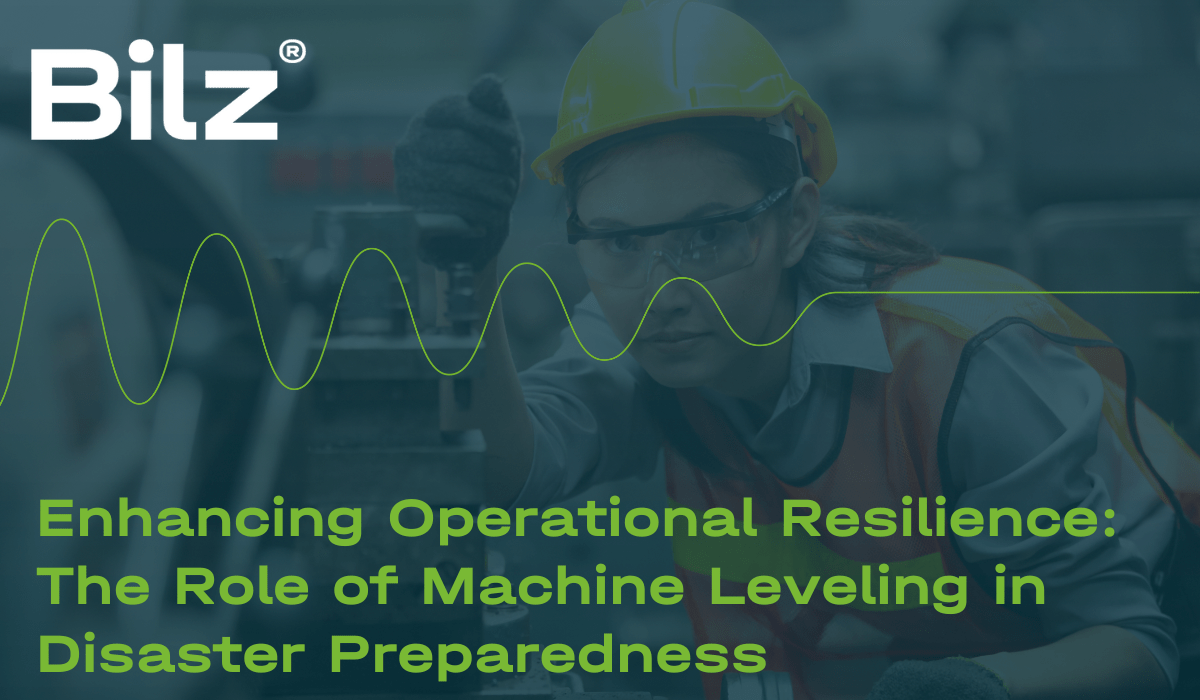

In an era where businesses must navigate the complexities of global supply chains, environmental uncertainties, and ever-present risks of operational disruptions, resilience has become a key factor for success. Operational resilience refers to an organization's ability to anticipate, prepare for, respond to, and recover from operational disruptions. Within the manufacturing sector, ensuring that machinery is properly leveled plays a surprisingly critical role in enhancing operational resilience, particularly in the context of disaster preparedness. This blog post explores how effective machine leveling can contribute to a manufacturing facility's ability to withstand and quickly recover from various types of disruptions.
Properly leveled machinery operates more smoothly, reducing vibrations that can lead to premature wear and tear. In the event of minor earthquakes or other ground movement, well-leveled machinery is less likely to suffer damage or misalignment. This preventative measure ensures that machinery maintains optimal performance and extends its operational life, contributing to the overall resilience of the manufacturing operation.
Disruptions in production, whether from natural disasters or equipment failure, can lead to significant financial losses and damage to a company's reputation. Machine leveling is critical for maintaining the precision and quality of manufactured products. By ensuring that machines are accurately leveled, manufacturers can reduce the risk of quality issues that might arise from equipment misalignment, ensuring a swift return to full operational capacity following a disruption.
Incorporating regular leveling checks into a facility's routine maintenance schedule can serve as an early warning system for potential equipment issues. These checks can identify alignment problems that might indicate settling foundations or structural weaknesses in the facility, allowing for proactive measures to strengthen and secure the equipment and building against potential disasters.
Advancements in leveling technology, such as automated leveling systems equipped with real-time monitoring and adjustment capabilities, can adapt to changes in the environment. In areas prone to flooding, for example, machines equipped with adaptive leveling systems can adjust to minor shifts in ground level or water damage, maintaining operational stability.
Training personnel in the principles of machine leveling and disaster response is crucial for enhancing operational resilience. Simulated disaster exercises that include scenarios involving equipment misalignment and leveling adjustments can prepare staff to quickly and effectively respond to actual events, minimizing downtime and ensuring safety.
Looking ahead, the integration of machine leveling with broader industrial IoT (Internet of Things) systems offers promising avenues for enhancing resilience. IoT sensors can provide continuous monitoring of machine alignment, structural integrity, and environmental conditions, feeding data into advanced analytics platforms that can predict potential issues and automate responses.
While often overlooked in discussions of operational resilience and disaster preparedness, machine leveling is a fundamental aspect of maintaining manufacturing stability and performance. By ensuring that machinery is properly leveled and integrating advanced monitoring and adaptive technologies, manufacturers can significantly enhance their resilience to operational disruptions. As businesses continue to face an increasingly complex and unpredictable global landscape, the role of machine leveling in disaster preparedness will remain an essential consideration for operational resilience strategies.